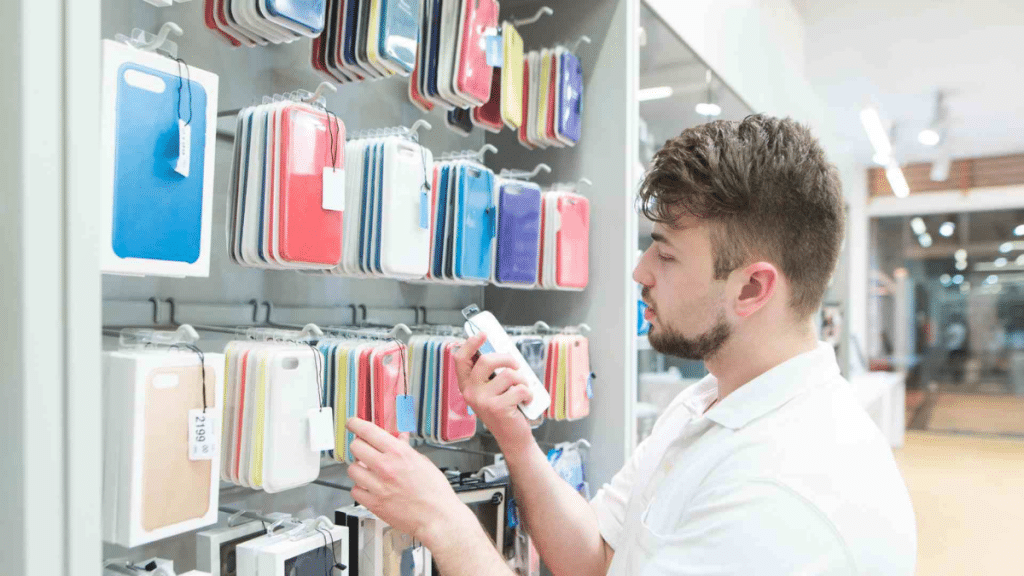In today’s digital age, smartphones are more than just communication tools — they serve as our cameras, planners, wallets, entertainment hubs, and even health trackers. With such an integral role in our lives, it’s no surprise that damaging a smartphone can cause not only inconvenience but also significant financial stress. Whether it’s a cracked screen, water damage, or internal malfunction due to a drop, the risk of physical damage is real and often costly.
Fortunately, there are several practical steps you can take to protect your smartphone from physical harm. In this guide, we’ll explore smart habits and accessories that can help keep your device safe and functioning at its best.
1. Invest in a High-Quality Case
One of the simplest yet most effective ways to protect your smartphone is by using a sturdy phone case. A high-quality case acts as a shock absorber, reducing the impact when your phone hits the ground. Look for options with reinforced corners and raised edges to shield your screen and camera lens from direct contact during falls.
There are various types of cases to suit your needs:
- Slim cases for minimalists who want basic protection without bulk.
- Rugged cases for those working in active or outdoor environments.
- Wallet cases that offer protection while also holding cards and cash.
Remember, spending a little extra on a premium case now can save you from costly repairs later.
2. Use a Tempered Glass Screen Protector
While your phone case may offer edge protection, your screen still needs safeguarding. Tempered glass screen protectors add an extra layer of defense against scratches, cracks, and smudges. They are designed to take the hit so your actual screen doesn’t have to.
Some protectors even come with anti-glare, anti-fingerprint, or privacy filters, making them a valuable multi-purpose accessory.
3. Avoid Placing Your Phone in High-Risk Locations
Many phone accidents occur due to careless placement. Avoid leaving your phone on the edge of tables, beds, or counters where it can easily be knocked off. Also, refrain from placing your phone in your back pocket — it’s a common cause of screen cracking or bending when you sit down.
When driving, always use a secure phone mount instead of placing your phone loosely on the seat or dashboard. Small adjustments like these significantly lower the chances of drops and impacts.
4. Keep Your Phone Away from Water and Moisture
Water damage is one of the leading causes of smartphone malfunction, especially in humid environments or around pools and sinks. Even though many modern smartphones come with some level of water resistance, it’s best not to test their limits.
- Avoid using your phone in the rain or bathroom.
- Consider using waterproof pouches during outdoor activities or travel.
- If you’re at the beach or pool, store your phone in a sealed bag with silica gel packs to reduce moisture exposure.
5. Avoid Exposure to Extreme Temperatures
Excessive heat or cold can degrade your smartphone’s battery, warp internal components, and even crack the screen. Never leave your phone in a hot car or in direct sunlight for long periods. Similarly, avoid exposing it to freezing temperatures.
If you must be in extreme environments, power off your phone when not in use and store it in a well-insulated bag or case.
6. Use a Wrist Strap or Phone Grip
For those who frequently use their phone while walking, commuting, or multitasking, accessories like phone grips or wrist straps can provide added security. Pop sockets, ring holders, and phone slings improve your grip and make accidental drops less likely.
These accessories are especially useful for content creators, travelers, or parents with kids who love grabbing devices unexpectedly.
7. Regularly Clean Your Phone Safely
Dust, dirt, and debris can sneak into your phone’s ports, affecting its functionality. Gently clean your phone with a microfiber cloth and use a soft brush to remove dirt from crevices. Avoid using harsh cleaning chemicals or soaking your phone, even if it’s water-resistant.
Using a protective case with port covers can also prevent buildup of lint and debris over time.
8. Be Mindful During Charging
Many people damage their phones while charging by using cheap or incompatible chargers, yanking cables, or bending wires. Always use certified cables and avoid charging your phone on unstable surfaces where it can fall off.
If you notice your charging port becoming loose or unresponsive, it’s best to consult a professional technician before it worsens.
9. Rely on Experts for Maintenance or Repairs
Despite all precautions, accidents happen. When they do, it’s important not to attempt DIY repairs unless you’re experienced. Opening a device without proper tools or expertise can worsen the damage and void warranties.
Instead, rely on trusted professionals like LYK Repair, who specialize in fast and affordable smartphone repairs in Singapore. Whether it’s a cracked screen, battery replacement, or internal issue, expert technicians can restore your device without risking further damage.
Final Thoughts
Smartphones are a big investment, both financially and functionally. Taking proactive steps to protect your device not only extends its lifespan but also saves you the cost and stress of unexpected repairs.
By investing in proper accessories, being mindful of how and where you use your phone, and knowing when to seek professional help, you can keep your smartphone in excellent condition for years to come.

